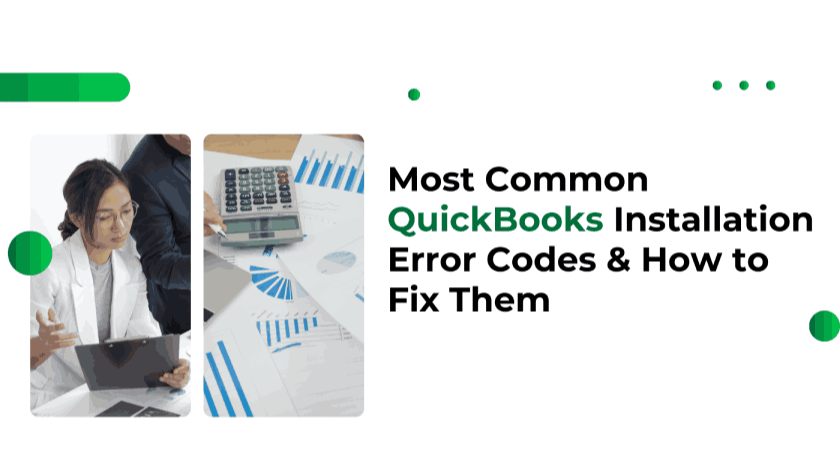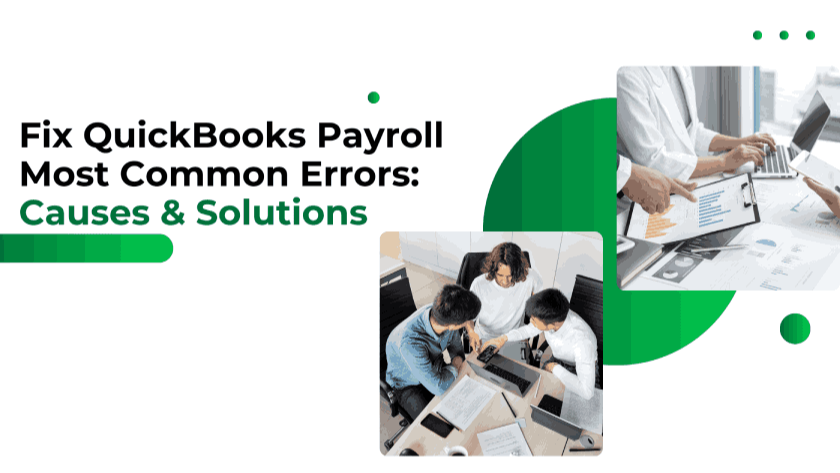Excerpt:
If you're facing banking errors in QuickBooks, such as connectivity issues, transaction download failures, or authentication problems, this guide will help you troubleshoot common issues like Error 101, Error 9999, and bank feed malfunctions. Learn how to resolve problems related to outdated credentials, missing transactions, or mismatched data to ensure seamless bank reconciliations and accurate financial management in QuickBooks.
Common Banking Issues in QuickBooks Desktop & Online
Below is a list of the most frequent banking-related problems users encounter in QuickBooks:
1. Bank Connectivity Issues
One of the most common problems that prevent QuickBooks from connecting to your bank stems from network issues or certain bank protocols that are not fully compatible with QuickBooks. This can lead to an inability to sync data between your bank and QuickBooks.
Common problems include:
-
QuickBooks failing to connect to the bank’s server.
-
QuickBooks Online Banking Connection Error #101.
-
Outdated or incorrect bank login credentials.
-
Bank feeds not working or failing after an upgrade.
-
QuickBooks unable to establish a connection with HSBC bank.
-
Bank website experiencing temporary downtime.
-
"Unable to Verify Financial Institution" error in QuickBooks.
-
Error 9999 occurring when updating bank transactions in QuickBooks Online.
-
QuickBooks Error 103, Error 105, and Error 102.
2. Bank Feed-Specific Error Codes
Certain error codes, such as 102 and 103, indicate problems related to server downtime or incorrect login credentials, which prevent users from accessing bank feeds.
Common problems include:
-
Errors such as OL-202, OL-301, OL-393, OLSU-1043, or OL-232 indicating bank feed issues.
-
Financial institution server experiencing issues, preventing transactions from being imported.
3. Transaction Download Errors
Transaction download failures occur when the syncing process is incomplete, bank feeds are outdated, or QuickBooks fails to fetch new transactions.
Common problems include:
-
Missing transactions in the bank feed.
-
Duplicate transactions being downloaded.
-
Incorrect or misclassified transaction data.
4. Authentication Errors
Entering incorrect credentials or facing two-factor authentication issues can prevent QuickBooks from accessing your bank account.
Common problems include:
-
Invalid or outdated bank login credentials.
-
Multi-factor authentication (MFA) failures.
-
Errors such as Error 108 and Error 185.
-
Synchronization issues with Lowe’s Synchrony Bank card login.
5. Bank Rules and Transaction Matching Errors
Bank rules may not match transactions correctly, leading to misclassified transactions or duplicate records.
Common problems include:
6. Update-Related Issues
Errors may arise when QuickBooks is outdated or when banks implement new procedures that interfere with existing connections.
Common problems include:
7. File Import Errors
Errors occur when CSV, QBO, or OFX files fail to import due to formatting issues, incorrect headers, or size limitations.
Common problems include:
-
Issues when importing QBO, CSV, or OFX files into QuickBooks.
-
Incompatible file formats or corrupted file imports.
8. Account Configuration Errors
Improper account setup can prevent QuickBooks from syncing bank information or retrieving transactions correctly.
Common problems include:
-
Incorrect bank account mapping in QuickBooks.
-
Duplicate or improperly linked bank accounts.
-
Reconciliation errors in QuickBooks.
-
Inability to undo reconciliations in QuickBooks Online.
9. Third-Party Integration Conflicts
Errors may arise when third-party applications that manage bank feeds interfere with QuickBooks, leading to duplicate transactions or synchronization issues.
Common problems include:
10. Regional Restrictions
While QuickBooks is widely compatible with many banks, certain banks or regions may not support direct integration with QuickBooks, restricting automatic transaction downloads.
Common problems include:
Addressing banking issues in QuickBooks effectively can improve financial accuracy and ensure smooth operations. Regular software updates, correct account configurations, and prompt troubleshooting of errors will help optimize your banking processes and minimize disruptions.
FAQs
1. Which Three Criteria Can Be Specified in a Bank Rule Condition in QuickBooks Online?
The three criteria for bank rule conditions are:
-
Transaction description.
-
Amount.
-
Payee name.
2. Why is a Payment Declined in QuickBooks?
Payments may be declined due to:
-
Insufficient funds in the bank account.
-
Incorrect payment details entered.
-
Restrictions imposed by the payer’s bank.
3. How Can I Fix Bank Reconciliation Discrepancies in QuickBooks Desktop?
Follow these steps:
-
Identify and fix missing or duplicate transactions.
-
Ensure the opening balance in QuickBooks matches the bank statement.
-
Adjust the cleared status for incorrect entries.
4. Why is QuickBooks Not Matching Bank Transactions?
QuickBooks may fail to match transactions due to:
-
Differences in transaction amounts.
-
Unrecorded transactions in QuickBooks.
-
Incorrect bank rules or mismatches in transaction details.
-
Performing a manual transaction match can help resolve mismatches efficiently.
By following the troubleshooting steps mentioned above, QuickBooks users can resolve common banking errors and streamline their financial processes.
 11183 Stone brook Dr. Manassas VA 20112
11183 Stone brook Dr. Manassas VA 20112
 Mon-Fri : 09:30 Am - 06:24 Pm
Mon-Fri : 09:30 Am - 06:24 Pm




